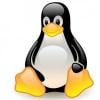cloud
 |
What Exactly Is Serverless? The word serverless—it’s everywhere. The word has been Googled an average of 100 times daily in 2020. Is serverless just a buzzword? A facade? Or a world where we won’t need servers anymore? |
|
 |
Operationalizing Cloud Security with Policy-as-Code Josh Stella explores why PaC is critical to validate that large, complex cloud infrastructure environments adhere to industry compliance standard and internal policies.
|
|
 |
Choosing a Linux Distribution for Docker Containers In the Linux operating system, each Docker container does not use a complete operating system kernel; multiple Docker containers can share the same one. Which Linux distribution should you use as the host? Let’s look at the factors that govern the choice of a host OS, as well as the Linux to run within a Docker container. |
|
 |
Breaking Down Apache’s Hadoop Distributed File System Apache Hadoop is a framework for big data. One of its main components is HDFS, Hadoop Distributed File System, which stores that data. You might expect that a storage framework that holds large quantities of data requires state-of-the-art infrastructure for a file system that does not fail, but quite the contrary is true. |
|
 |
Comparing Apache Hadoop Data Storage Formats Apache Hadoop can store data in several supported file formats. To decide which one you should use, analyze their properties and the type of data you want to store. Let's look at query time, data serialization, whether the file format is splittable, and whether it supports compression, then review some common use cases. |
|
 |
Benefits of Using Columnar Storage in Relational Database Management Systems Relational database management systems (RDBMS) store data in rows and columns. Most relational databases store data row-wise by default, but a few RDBMS provide the option to store data column-wise, which is a useful feature. Let’s look at the benefits of being able to use columnar storage for data and when you'd want to. |
|
 |
Comparing Apache Sqoop, Flume, and Kafka Apache Sqoop, Flume, and Kafka are tools used in data science. All three are open source, distributed platforms designed to move data and operate on unstructured data. Each also supports big data in the scale of petabytes and exabytes, and all are written in Java. But there are some differences between these platforms. |
|
 |
Comparing XML and JSON: What’s the Difference? XML (Extensible Markup Language) and JSON (JavaScript Object Notation) are the two most common formats for data interchange. Although either can be used to receive data from a web server, there are differences that set them apart. Here are the abilities and support for each option so you can choose what works for you. |



